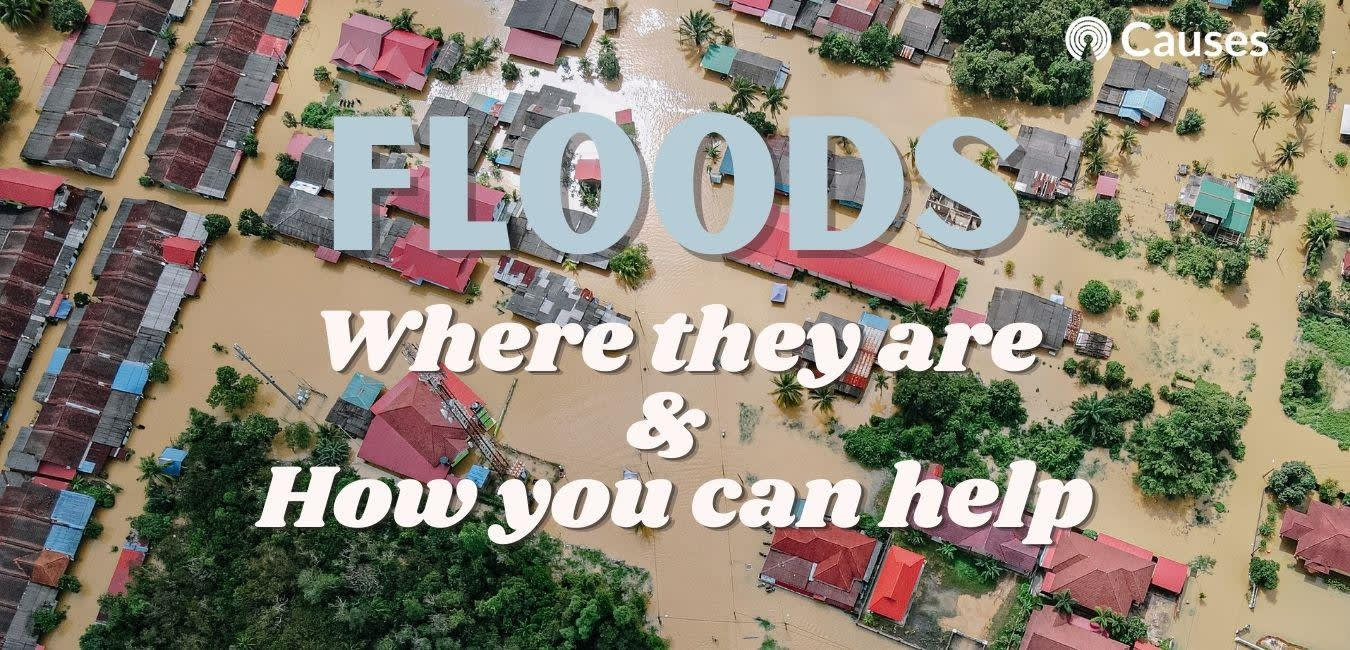
Global flooding: What's happening and how can you help?
Are you concerned about flooding?
By Casey Dawson
Worldwide Flooding Disasters
In the past 50 years, over 50% of all disasters, 45% of all reported deaths, and 74% of all reported economic losses were from water-related events, according to a study by the United Nations’ World Meteorological Organization (WMO).
Floods are the most frequent type of natural disaster, and are usually caused by heavy rain, melting ice and snow, or storm surges from hurricanes or tsunamis in combination with geographical and human-related factors.
While floods are a naturally occurring part of the water cycle, they can still devastate environments and communities that do not properly account for flood risks. On top of that, climate change is accelerating the frequency and intensity of these extreme weather events.
Consequences
To name just a few in just the past year - flooding in Tennessee killed at least 22 people, Europe’s record breaking floods killed almost 200 and injured over 700 just in Germany, and flooding in both China and India killed hundreds earlier this year and are currently devastating millions once again. Nearly 90% of flood events occur in South and Southeast Asia, especially in China and India.
In just the month of July, over 920 people were killed in floods and landslides worldwide. The WMO called it a “summer of extremes”.
According to University of Reading hydrologist and flood forecaster Hannah Cloke:
“We should not be seeing this number of people dying in 2021 from floods. It just should not be happening.”
Of the top ten disasters in the world with the most in economic losses, floods and storms account for the entirety of the list.
Causes of increased flooding
Climate change
Depending on geographic location, floods can be caused by many different factors, but it is no question that climate change is exacerbating many of those factors. Warmer temperatures build up more moisture in the air, encouraging hurricanes and supercharging rainstorms.
One study found that climate change increased the intensity of daily rainfall by between 3% and 19%. An increase in heavy rainfall and higher average temperatures are only projected to continue.
Higher temperatures can also cause snow and ice to melt at a much earlier and higher rate than ever before in some cases, leading to overflowing rivers and flood risk.
In addition, melting glaciers and ice sheets mean that global sea levels are rising. In the US, high-tide flooding in coastal areas has doubled in the past 30 years.
Interestingly, drought is also a contributing factor to flood risk and is correlated with climate change. With higher temperatures, water evaporates more, leaving incredibly dry soil and vegetation behind. Drier earth makes it harder for rain to sink into the ground, instead accumulating on the surface and potentially contributing to flooding.
Outdated Infrastructure
An increase in rainfall, general wear and tear from time, and lack of repair funding are potentially putting thousands of dams (and millions of people) at risk.
An investigation published in 2019 by the Associated Press found that as many as 1,680 of dams in the US were rated in “poor or unsatisfactory” condition and could pose a potential flood risk. The report also estimated that the true number of at-risk dams was much higher.
Environmental Destruction
As countries build and grow, they often remove green spaces that typically work to absorb water, and replace them with impermeable concrete cities. This can exacerbate the impacts of flooding in cities.
Global wetlands, which are essential components of the water cycle and work to absorb rainfall, have declined by more than 50% since 1900. Forests also serve a similar role, but rapid worldwide deforestation is also a contributor to increased flood risk.
Agriculture and housing development policies that do not take into account flood risk can also put more people at risk. Building too close to rivers, eliminates natural barriers of vegetation and contributes to flash flooding.
Solutions do exist, with one example being in the Netherlands. Policies there have ensured that towns set aside land where floodwaters can spread out, limit the ability to build directly next to rivers, and widen and deepen river channels so they have room to grow during storms without overflowing.
How you can help
Keep up to date with flood news around the world here. Track current flood information in the US on the National Weather Service’s site.
Donate
The majority of people impacted by floods are lower income and in developing countries. Donating directly to organizations can have the most immediate impact in helping these communities, even if they are right next door or across the world from you.
Here are just a few organizations that help with flood disaster relief worldwide.
- Donate to Goonj to help with flood relief in India.
- Donate to Give2Asia to support flood relief efforts in China.
- Donate to The American Red Cross, who are currently helping with flooding recovery efforts in Tennessee.
- Read a full list of reputable natural disaster relief organizations around the world here.
Volunteer
- Check to see if your city or state has a disaster relief volunteer registry and sign up.
- Become a Disaster Volunteer with the Red Cross.